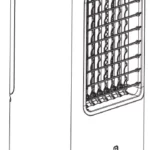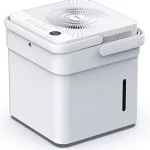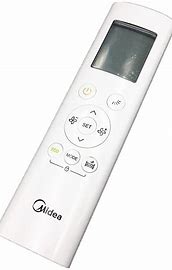

Midea MPPD25C Remote Controller
Remote Controller Specifications
| Model |
RG10F(B)/BGEF、RG10F1(B)/BGEF、RG10F2(B1)/BGEFU1、RG10F3(B1)/BGEFU1 |
| Rated Voltage | 3.0V( Dry batteries R03/LR03×2) |
| Signal Receiving Range | 8m |
| Environment | -5°C~60°C(23°F~140°F) |
Quick Start Guide
- FIT BATTERIES
- SELECT MODE
- SELECT TEMPERATURE

- PRESS POWER BUTTON
- POINT REMOTE TOWARD UNIT
- SELECT FAN SPEED
NOT SURE WHAT A FUNCTION DOES?
Refer to the How to Use Basic Functions and How to Use Advanced Functions sections of this manual for a detailed description of how to use your air conditioner.
SPECIAL NOTE
- Button designs on your unit may differ slightly from the example shown.
- If the indoor unit does not have a particular function, pressing that function’s button on the remote control will have no effect.
- When there are wide differences between “Remote controller Manual” and “USER’S MANUAL” on function description, the description of “USER’S MANUAL” shall prevail.
Handling the Remote Controller
Inserting and Replacing Batteries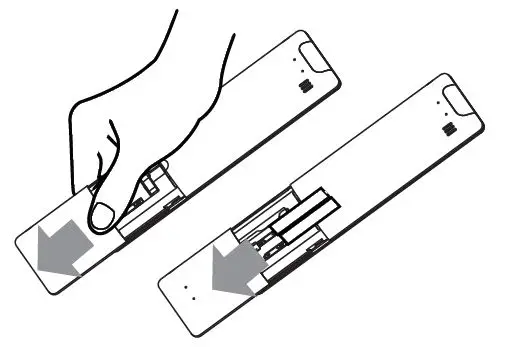
Your air conditioning unit may come with two batteries(some units). Put the batteries in the remote control before use.
- Slide the back cover from the remote control downward, exposing the battery compartment.
- Insert the batteries, paying attention to match up the (+) and (-) ends of the batteries with the symbols inside the battery compartment.
- Slide the battery cover back into place.
BATTERY NOTES
For optimum product performance:
- Do not mix old and new batteries, or batteries of different types.
- Do not leave batteries in the remote control if you don’t plan on using the device for more than 2 months.
BATTERY DISPOSAL
Do not dispose of batteries as unsorted municipal waste. Refer to local laws for proper disposal of batteries.
TIPS FOR USING REMOTE CONTROL
- The remote control must be used within 8 meters of the unit.
- The unit will beep when remote signal is received.
- Curtains, other materials and direct sunlight can interfere with the infrared signal receiver.
- Remove batteries if the remote will not be used more than 2 months.
NOTES FOR USING REMOTE CONTROL
The device could comply with the local national regulations.
- In Canada, it should comply with CAN ICES-3(B)/NMB-3(B).
- In USA, this device complies with part 15 of the FCC Rules. Operation is subject to the following two conditions:
- This device may not cause harmful interference, and
- this device must accept any interference received, including interference that may cause undesired operation.
This equipment has been tested and found to comply with the limits for a Class B digital device, pursuant to part 15 of the FCC Rules. These limits are designed to provide reasonable protection against harmful interference in a residential installation. This equipment generates, uses and can radiate radio frequency energy and, if not installed and used in accordance with the instructions, may cause harmful interference to radio communications. However, there is no guarantee that interference will not occur in a particular installation. If this equipment does cause harmful interference to radio or television reception, which can be determined by turning the equipment off and on, the user is encouraged to try to correct the interference by one or more of the following measures:
- Reorient or relocate the receiving antenna.
- Increase the separation between the equipment and receiver.
- Connect the equipment into an outlet on a circuit different from that to which the receiver is connected.
- Consult the dealer or an experienced radio/TV technician for help. Changes or modifications not approved by the party responsible for compliance could void the user’s authority to operate the equipment.
Buttons and Funcitons
Before you begin using your new air conditioner, make sure to familiarize yourself with its remote control. The following is a brief introduction to the remote control itself. For instructions on how to operate your air conditioner, refer to the How to Use Basic Functions section of this manual.
Model: RG10F(B)/BGEF (Fresh feature is not available) RG10F1(B)/BGEF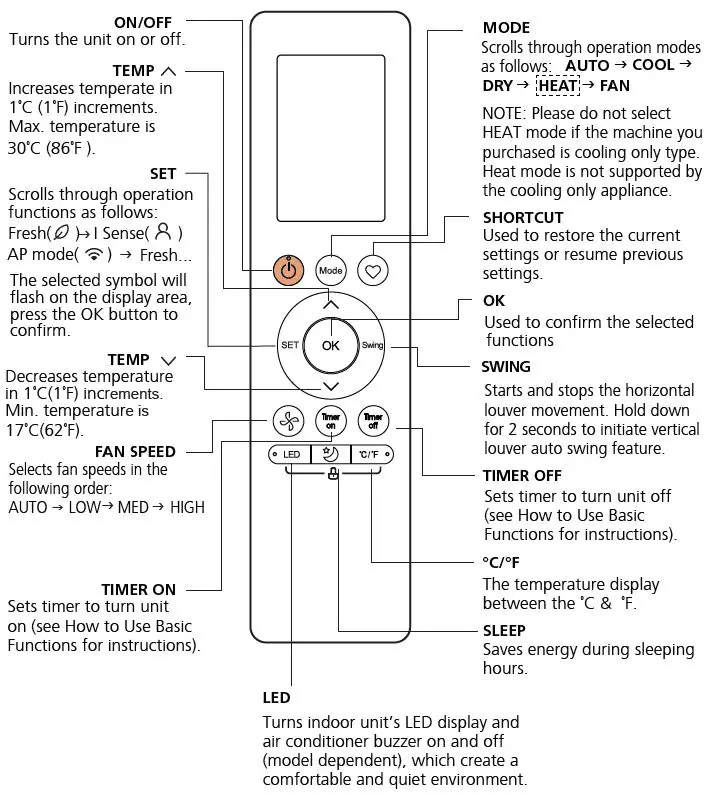
Model: RG10F2(B1)/BGEFU1(Fresh feature is not available)RG10F3(B1)/BGEFU1
Remote Screen Indicators
Information are displayed when the remote controller is power up.
NOTE:
All indicators shown in the figure are for the purpose of clear presentation. But during the actaul operation, only the relative function signs are shown on the display window.
How to Use Basic Functions
Basic operation
ATTENTION! Before operation, please ensure the unit is plugged in and power is available.
SETTING TEMPERATURE
The operating temperature range for units is 17°C-30°C (62°F-86°F). You can increase or decrease the set temperature in 1°C (1°F) increments.
AUTO Mode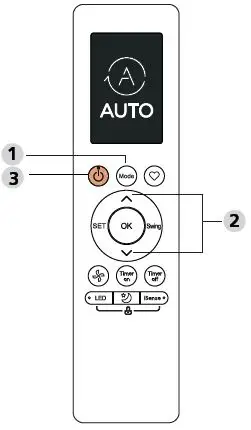
In AUTO mode, the unit will automatically select the COOL, FAN, or HEAT function based on the set temperature.
- Press the MODE button to select AUTO.
- Set your desired temperature using the TEMP or TEMP button.
- Press the ON/OFF button to start the unit.
NOTE: FAN SPEED can’t be set in AUTO mode.
COOL Mode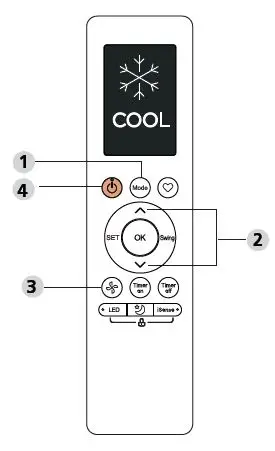
- Press the MODE button to select COOL mode.
- Set your desired temperature using the TEMP or TEMP button.
- Press the FAN button to select the fan speed: AUTO, LOW, MED or HIGH.
- Press the ON/OFF button to start the unit.
DRY Mode
- Press the MODE button to select DRY.
- Set your desired temperature using the TEMP or TEMP button.
- Press the ON/OFF button to start the unit.
NOTE: FAN SPEED cannot be changed in DRY mode.
FAN Mode
- Press the MODE button to select FAN mode.
- Press FAN button to select the fan speed: AUTO, LOW, MED or HIGH.
- Press the ON/OFF button to start the unit.
NOTE: You can’t set the temperature in FAN mode. As a result, your remote control’s LCD screen will not display the temperature.
HEAT Mode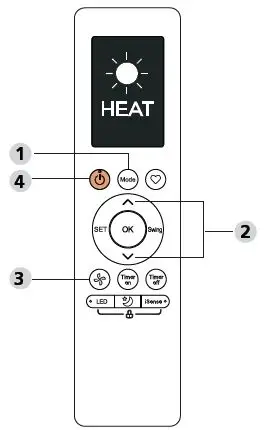
- Press the MODE button to select HEAT mode.
- Set your desired temperature using the TEMP or TEMP button.
- Press FAN button to select the fan speed: AUTO, LOW, MED or HIGH.
- Press the ON/OFF button to start the unit.
NOTE: As outdoor temperature drops, the performance of your unit’s HEAT function may be affected. In such instances, we recommend using this air conditioner in conjunction with other heating appliances.
Setting the TIMER
TIMER ON/OFF – Set the amount of time after which the unit will automatically turn on/off.
TIMER ON setting
- Press the TIMER ON button to initiate the ON time sequence.
- Press up or down button for multiple times to set the desired time to turn on the unit.
- Point remote to unit and wait 1sec, the TIMER ON will be activated.
TIMER OFF setting
- Press TIMER OFF button to initiate the OFF time sequence.
- Press Temp. up or down button for multiple times to set the desired time to turn off the unit.
- Point remote to unit and wait 1sec, the TIMER OFF will be activated.
NOTE:
- When setting the TIMER ON or TIMER OFF, the time will increase by 30 minutes increments with each press, up to 10 hours. After 10 hours and up to 24, it will increase in 1 hour increments.( For example, press 5 times to get 2.5h, and press 10 times to get 5h,) The timer will revert to 0.0 after 24.
- Cancel either function by setting its timer to 0.0h.
TIMER ON & OFF setting(example)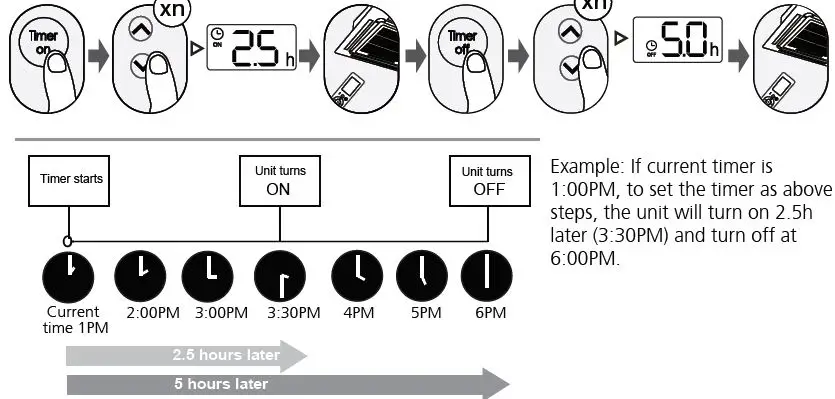
Keep in mind that the time periods you set for both functions refer to hours after the current time.
How to Use Advanced Functions
SHORTCUT function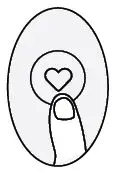
Press the SHORTCUT button Push this button when the remote controller is on, the system will automatically revert back to the previous settings including operating mode, setting temperature, fan speed level and sleep feature (if activated). If pushing for more than 2 seconds, the system will automatically restore the current operation settings including operating mode, setting temperature, fan speed level and sleep feature (if activated ).
°C/°F (some models)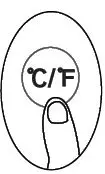
Press this button will alternate the temperature display between the °C & °F.
Swing function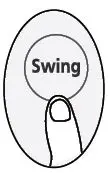
Press the Swing button The horizontal louver will swing up and down automatically when pressing the Swing button. Press again to make it stop.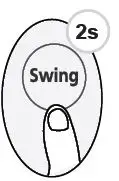
Keep pressing this button more than 2 seconds, the vertical louver swing function is activated. (Model dependent)
LED DISPLAY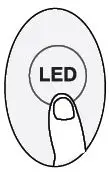
Press LED button Press this button to turn on and turn off the display on the indoor unit.
SLEEP Function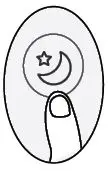
Press SLEEP button The SLEEP function is used to decrease energy while you sleep(and don’t need the same temperature settings to stay comfortable). This function can only by activated via remote control. For the details, please see “sleep operation ” in “ USER’S MANUAL ”.
NOTE: The SLEEP function is not available in FAN or DRY mode.
I SENSE (some models)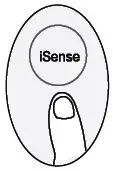
Press I SENSE button When the I SENSE function is activated, the remote display is actual temperature at its location. The remote control will send this signal to the air conditioner every 3 minutes interval until press the I SENSE button again.
LOCK function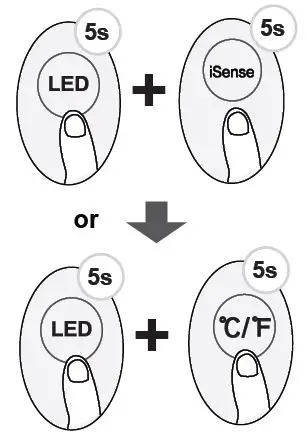
Press together LED button and I SENSE or LED and °C/°F button at the same time for more than 5 seconds to activate the Lock function. All buttons will not respond except pressing these two buttons for two seconds again to disable locking.
SET function
- Press the SET button to enter the function setting, then press the SET button or TEMP or TEMP button to select the desired function. The selected symbol will flash on the display area, press the OK button to confirm.
- To cancel the selected function, just perform the same procedures as above.
- Press the SET button to scroll through operation functions as follows:
Fresh * [ ]: If your remote controller has I Sense button, you can not use the SET button to select the I sense feature.
FRESH function (some units)
When the FRESH function is initiated, the Ionizer/Plasma Dust Collector(depending on models) is energized and will help to remove pollen and impurities from the air.
AP function (some units)
Choose AP mode to do wireless network configuration. For some units, it doesn’t work by pressing the SET button. To enter the AP mode, continuously press the LED button seven times in 10 seconds.
The design and specifications are subject to change without prior notice for product improvement. Consult with the sales agency or manufacturer for details.


